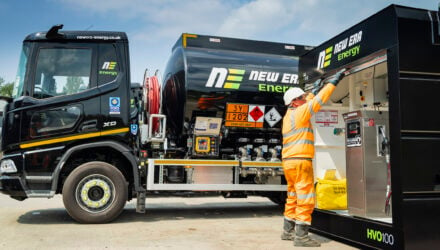Your business is likely ready to make the switch to electric vehicles for a few reasons including financial benefits and supporting wider net zero targets. These benefits may be clear to you as a fleet manager, but getting drivers on board is a current challenge many are facing across the UK. It’s been found that once the ban on ICE vehicles takes effect in 2030, 25% of drivers would still rather choose a regular combustion vehicle over switching to an electric car. [1]
For fleet managers specifically, hesitation focuses around the logistics of ‘at home’ charging (28%) and prohibitive cost (36%) [2]. Factors could also include natural resistance to change and hesitation around new technologies, or a lack of understanding and unfamiliarity, alongside concerns due to misinformation around electric vehicle use.
To overcome these barriers, it’s important to ensure you bring your fleet drivers on your journey to electrification with you.
Make charging as easy as possible
Fleet managers must make charging as easy and accessible as possible for their drivers. This can be achieved through a combined approach to charging, by opting for a solution that covers workplace, home and on the road. In doing so, drivers can charge at their own convenience, without feeling as though charging disrupts their day. This doesn’t mean that fleet managers lose control over where and when their drivers charge, but it helps to ensure that operations keep moving.
For fleets that operate a return-to-home scenario, the assumption is often that home charging is the best solution when transitioning the fleet to EV. However, you need to consider how you’ll support drivers who don’t have off-street parking at home, which is predicted to be 25% of households within the UK [3]. This is where a combined solution can significantly benefit your operation. By installing chargers on site at your workplace or depot and by utilising public charging networks, drivers who do not have access to off-street parking are able to recharge at a time and place convenient to them and their route. Ensuring that charging is accessible for your fleet drivers should be the first step in your businesses EV journey.
Simplify charging payments for drivers
Once you’ve established how and where your drivers will charge, it’s important to make paying for that charge as easy as possible. Many charge-point network operators offer trade accounts, which can be used by multiple drivers with billing in arrears. Essentially, they mirror petrol fuel cards, which will more than likely be familiar to your fleet drivers already.
Where home charging is involved, combined billing solutions, such as our solution through our partnership with Mina, brings together charging and billing to ensure your drivers can charge anywhere, without the need to expense every charging payment themselves. This solution streamlines the process for both fleet managers and drivers, adding no extra admin for either party, removing a key barrier by offering a simple payment solution.
 Sell the benefits of switching to EV
Sell the benefits of switching to EV
Once the logistics are in place, it’s important to ensure your drivers feel they understand the benefits of making the switch to electric vehicles – from a business, personal and environmental perspective.
The sustainability benefits should be made clear, reminding your drivers that by adopting EV, they’re helping to support the wider net zero agenda and are driving change to benefit the future of the planet. Our GeniePoint dashboard insights help fleet managers to realise their CO2 savings through making the transition to EV.
In addition, some public charging networks, including our own GeniePoint public network chargers, are powered by 100% renewable energy. This reinforces the message that making the switch is sustainable from end-to-end.
For drivers themselves, benefits include that electric vehicles tend to be quieter and nicer to drive. They are also much cleaner, with the absence of tailpipe emissions. Many are also equipped with
advanced technology, providing a better driving experience overall. [4]
 Educate drivers to develop their knowledge
Educate drivers to develop their knowledge
It has been noted that a lot of the resistance from drivers simply comes down to a lack of understanding and knowledge of electric vehicles. Educating and training drivers should therefore be a priority to dispel misinformation and highlight the benefits. This should include explaining how to optimise EVs, how to charge and how to generally understand new behaviours, such as EV etiquette.
Clarifying common misconceptions around the true time it takes to charge, average electric vehicle range and also the cost of charging can be a really simple conversation – many drivers are pleasantly surprised by the reality of all of these elements.
As part of their end-to-end fleet charging solutions, Equans offers EV literacy training for drivers. This training covers everything they need to know about charging an electric vehicle and fitting charging into their schedule, plus guidance on how best to optimise their EV.
To find out more about how we can support your business in its EV transition, contact us today for a free no-obligation conversation: https://www.equans.co.uk/ev-solutions
Author: Nicola Mahmood, Business Development Director for Equans EV Solutions.
- https://www.assetfinanceinternational.com/index.php/auto-finance/auto-emea/auto-emea-articles/20801-drivers-resistant-to-switch-to-evs [1]
- https://www.masternaut.com/blog/stakeholder-buy-in-successful-ev-fleet-transition/ [2]
- https://www.field-dynamics.co.uk/25-drivers-no-off-street-parking/ [3]
- https://www.hsbc.co.uk/electric-vehicles/what-are-the-benefits-of-electric-cars/#:~:text=A%20huge%20benefit%20of%20electric,drive%20than%20conventional%20engine%20cars. [4]







